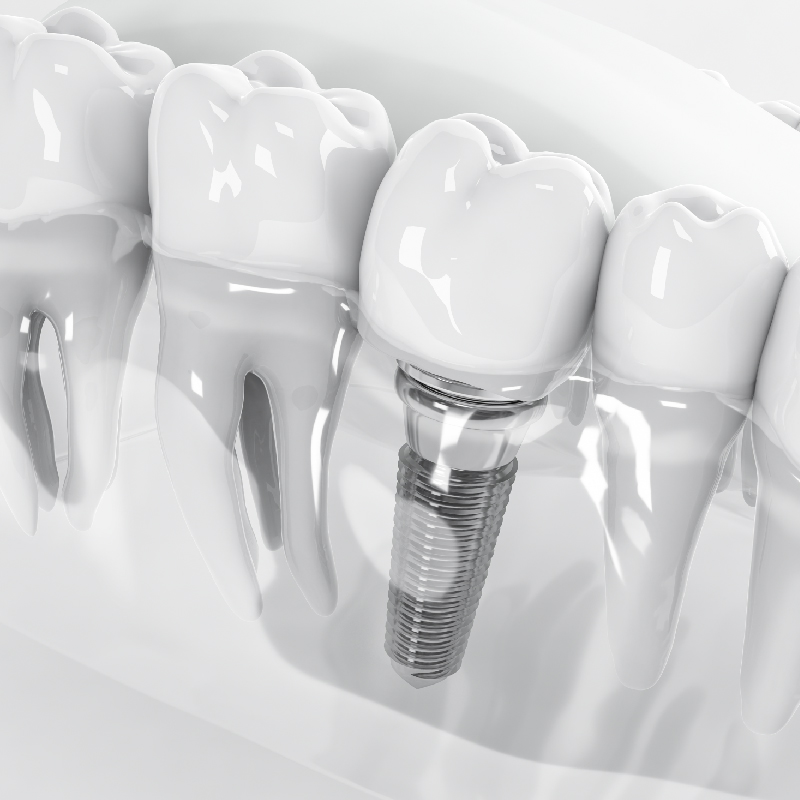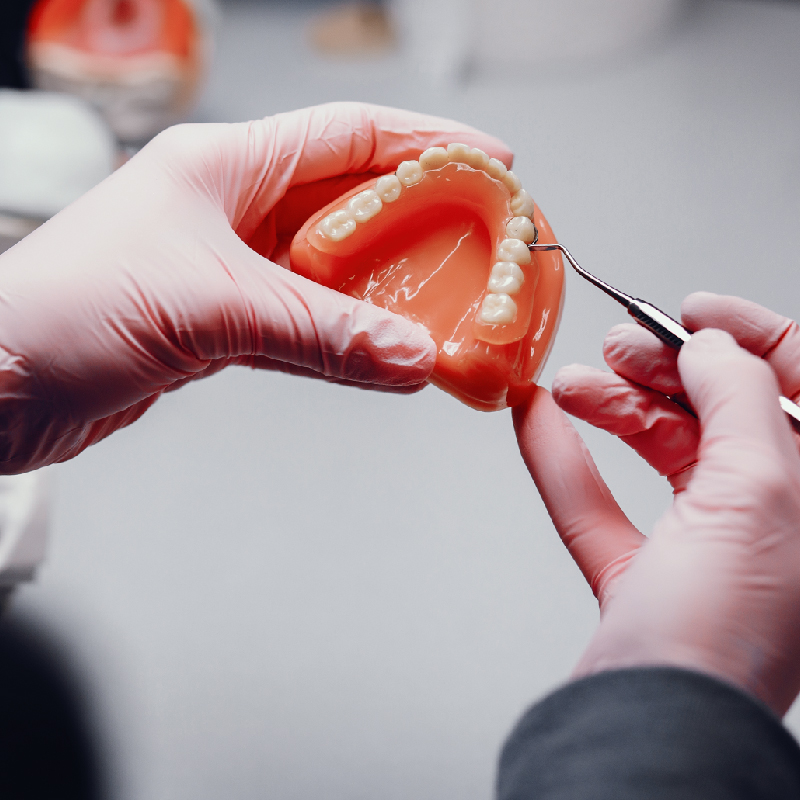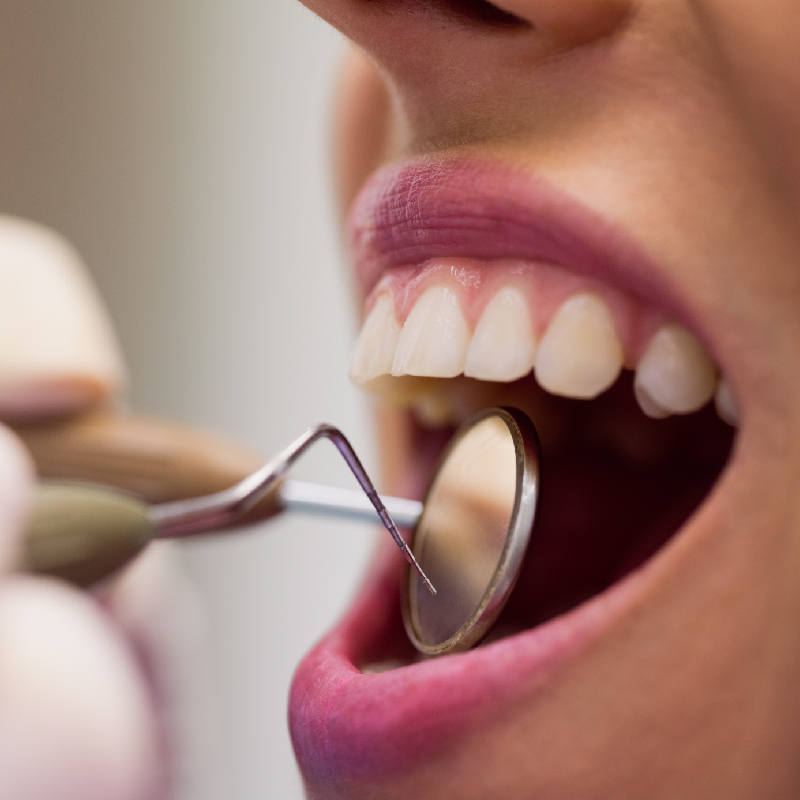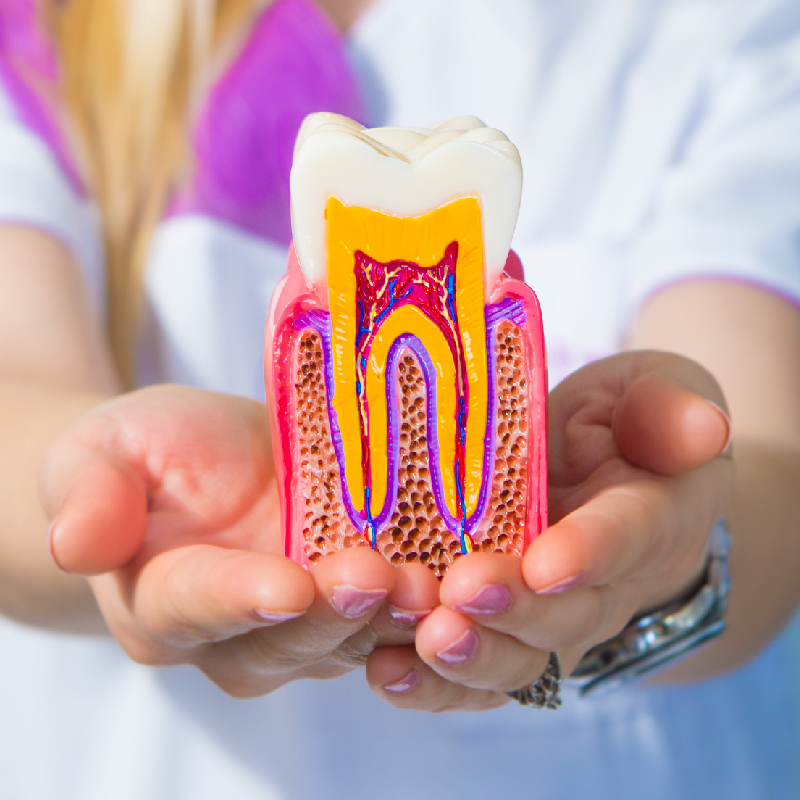Surgery and Restoration
Implants
Implants are a natural, permanent replacement for missing teeth that preserves your gums, jawbone, and adjacent teeth. They work by replacing the roots of your missing tooth with a titanium post. Your jawbone then grows into the implant’s threads, creating a solid connection that lasts a lifetime. The biggest difference between implants and other options is appearance and bone health. Implants keep your appearance natural and your jawbone healthy. Without an implant, the bone where your teeth used to be will waste away.


Fillings
When a small amount of tooth structure is missing due to decay, wear, or chipping, sometimes a filling is used to repair the damaged tooth. The filling material that we use in our office is tooth-colored and is called a composite resin. After preparing the tooth, an adhesive is used to bond the composite filling to the tooth. The filling is placed and sculpted to replace the tooth’s original form. We check the filling to make sure there aren’t any rough edges, and that it fits with the opposing tooth when biting. Sometimes after the numbness wears off, you may find that the bite feels weird. If that’s the case, please call our office, so that we can adjust the filling.
Dentures
A denture is a removable replacement for missing teeth and surrounding tissues. Two types of dentures are available: complete and partial dentures. Complete dentures are used when all the teeth are missing, while partial dentures are used when some natural teeth remain.
Complete dentures can be either “conventional” or “immediate.” Made after the teeth have been removed and the gum tissue has begun to heal. A removable partial denture or bridge usually consists of replacement teeth attached to a pink or gum-colored plastic base, which is sometimes connected by a metal framework that holds the denture in place in the mouth.


Extractions
After the application of anesthesia, special tools are inserted between the tooth and the gum surrounding the tooth. The tooth is moved back and forth within its socket (the bone that encases the tooth’s root) until it separates from the ligament that holds the tooth in place. Sometimes a tooth is cut into small pieces (sectioned) before it is removed.
This can include a broken tooth extraction or a wisdom tooth removal
Crowns & Bridges
Crowns are durable “jackets” that are placed over a tooth to protect it and strengthen it or to improve its appearance. They can also be used to restore teeth that have extensive decay or very large fillings. They surround the entire tooth, they’re an important part of the dental bridge process, is designed to cover the damaged part of the tooth and will restore it back to its original size, shape, and overall structure.
A dental bridge is a beautifully natural prosthetic tooth that is held in the gap left by a missing tooth. The bridge is bonded in position by crowns placed on the teeth on either side of the new false tooth. Dental bridges can be used to replace a single missing tooth or up to three in a row.


Root canals & Endodoncy
When a tooth becomes infected, the soft tissue inside of the roots becomes inflamed. Because the tooth is hard, a build-up of pressure occurs causing pain. This can cause the cheeks to swell up. A root canal relieves the pressure by removing the soft tissue inside of the tooth. Once the inside of the roots is cleaned and all of the infected tissue and bacteria is removed, the tooth roots are sealed up. After a tooth is treated with a root canal, a crown is necessary to protect the remaining tooth structure.
